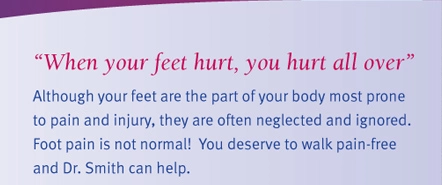Bunions are a common foot problem that increasingly get worse over time. But what exactly are bunions and—more importantly—how can they be treated?
A bunion is a bump that forms at the base joint of the big toe. The big toe does a lot for helping us walk and stay balanced, and so developing a deformity around it is understandably uncomfortable. Bunions are produced when pressure pushes the big toe toward the smaller toe, sometimes settling under or over it. This alignment causes the base joint to slowly change shape, resulting in the infamous bony bump.
Bunions can result from many different factors, including genetics, injury, arthritis, and wearing tight shoes, so it pays to be aware of the symptoms of this disorder. Symptoms include:
- A bump at the base of your big toe
- Pain, swelling, or soreness
- Numbness or restricted movement
Fortunately, there are a lot of things you can do once it’s been diagnosed you have a bunion. Getting periodic x-rays and evaluations of your toe joint is always helpful. Wearing comfortable shoes, padding your foot, icing your foot, and reducing activity that causes bunion pain are also recommended.
Easing bunion pain will not cure the deformity itself, however. Due to the disorder’s permanent and progressive nature, bunions will continually worsen with time. If bunion pain persists to the point where it’s affecting your daily routine it may be time to consider surgical treatment. A variety of surgical options are available for bunions, picking the right procedure just depends on the extent of the deformity and personal factors such as age and activity level.
For more information please visit:
- http://www.mayoclinic.org/diseases-conditions/bunions/home/ovc-20262028
- https://www.foothealthfacts.org/conditions/bunions
















